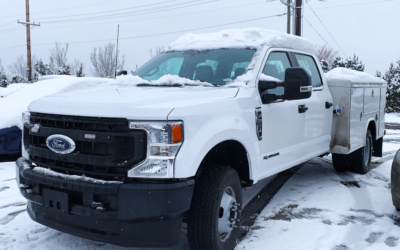Steps to Safely Jump Start Your Fleet Vehicle
When it comes to the fleet industry, one of the most annoying things to deal with is vehicles that break down on the way to a job site. This is because fleet routes are often quite long, out of the main city, and it can be really troubling to maintain fleet safety while trying to fix the vehicle in the middle of nowhere. This is why fleets must ensure that their vehicles are in proper shape throughout their tenure to avoid any such mishap.
With that said, even the most heavy-duty vehicles that are maintained to remain in top shape can experience some problems every now and then. These problems include engine failure, tire punctures, faulty batteries, and problems that occur due to extended downtime. However, arguably, the worst of the lot is the effect that cold weather has on a vehicle’s battery. During the winter months, it is pretty common for a car’s battery to fail. However, when that happens in the middle of a job, it often results in the driver being stranded on the side of the road.
This is why every fleet company must remind its drivers every step that they will need to safely jump-start their vehicle if it breaks down during their trip. This will ensure that no driver has to ever suffer the consequences of a broken-down vehicle.
So, without further ado, here is everything fleet drivers need to know so that they can safely eliminate all hazards and obstacles that might come in the way of fleet safety and safely jump-start their vehicle:
Essential Things to Remember
Before you learn how to jump-start your vehicle’s battery, here are two essential things that you need to remember:
Keep Jumper Cables Handy
The first step is to make sure that every driver has functioning jumper cables at hand. This will ensure that they don’t have to wait for someone else to hand them the cables, which will further quicken the process. So, make sure to keep jumper cables in your vehicles when you head out on a job.
Park Your Vehicle in a Safe Space
If the battery of your vehicle dies in the middle of your job and you want to jump start it on your own, make sure to park your vehicle in a safe spot that is away from any approaching traffic. As an added safety precaution, when you are parked on the side of the road, make sure to use flares.
Now, let’s take a look at how you can jump-start your vehicle:
How to Jump-Start a Vehicle
Here’s everything you need to know:
Keep a Safe Distance Between the Two Vehicles
Make sure that you park your broken down vehicle about 18 inches away from the vehicle that has a functioning battery.
Prepare Both Vehicles
Make sure to prepare both the vehicles by putting the gear shift in park mode. Then, set the parking brake and take extra care to turn off all electrical features such as the fan, lights, radio, etc. Unplug the chargers and remove the keys from the ignition.
Prepare the Cables
Prepare the jumper cables by stretching them out. Remember that you are supposed to use the red cables on positive terminals and the black ones on the negative terminals.
Prepare the Batteries
The next step is to locate the battery in each vehicle and take out the battery covers. You also need to identify the positive and negative terminals of the batteries before you move forward.
Connect the Red Clamps to the Batteries
Now you can safely begin the jump-starting process with your disabled vehicle. Connect the red cable by connecting the clamp with the positive terminal on the broken down battery. Move to the functioning battery in the other vehicle and attach the other end of the red cable to the positive terminal of that battery.
Connect One End of the Black Clamps to the Functioning Batteries
Just like you did with the red cables, make sure to connect the black clamp to the negative terminal on the functioning battery.
Connect Other End of Black Clamp
Now, you are only left with the other end of the black cable that you need to clamp to the disabled vehicle. However, don’t attach the clamp to the negative terminal of the disabled or dead battery as it can be potentially dangerous. It might cause sparks to erupt, which might lead to a small fire and compromise your fleet safety.
Instead, attach the other end of the black cable top a piece of unpainted and bare metal somewhere under the hood of your disabled vehicle. The perfect example is a bolt. However, make sure that your chosen spot is not anywhere near moving parts such as belts or fans.
Start the Vehicles One by One
Once you have clamped the batteries and the bolt, the connection will be established. Get in the vehicle with the functioning battery and start it up. Let the vehicle run for several minutes, until you get into the disabled one and start that up. Your disabled battery will start up and your vehicle will be as good as new!
Remove the Jumper Cables
Once the disabled vehicle starts running, make sure to turn off both the vehicles and remove the jumper cables.
The Bottom Line
To ensure proper fleet safety, every fleet driver needs to learn how to jump-start a vehicle. This is because you never know when a vehicle’s battery breaks down or dies. If you want to get out of such a situation, you must have jumper cables at hand. Make sure to follow the steps mentioned above so that you can jump-start your vehicle in no time and get on your merry way.
Source:
https://www.automotive-fleet.com/351553/video-tip-how-to-safely-jump-start-a-vehicle






